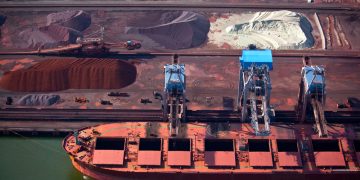Business Insider India as part of its Big Business series, looked at at how shipbreaking yards are dismantling decommissioned cruise ships sent due to the pandemic, while navigating safety, environmental and labor challenges.
Dismantling a vessel that once carried 2,000 passengers is one of the most dangerous jobs in the world. Shipbreakers saw off massive sections of the hull and move them overhead. With millions of dollars in salvageable parts at stake, any misstep could result in serious injury or environmental harm.
Before the pandemic, Aliağa’s 22 shipbreaking yards were relatively quiet, typically dismantling only a few dozen cargo ships each year. However after COVID-19 devastated the cruise industry, more ships started showing up.
Dismantling a floating city
Retired cruise ships are sailed to Turkey, where 2,500 workers dismantle them deck by deck, starting with navigational equipment and furniture. The process is complex and dangerous, involving the removal of amenities and structures using tools like saws and blowtorches, with workers facing risks from falls, toxic fumes and extreme weather.
Since October 2020, two workers have died from falling objects. In addition, with vessels grounded in the water, emergency services often can’t reach them in time during an accident.
Despite the dangers, working conditions in Aliağa are still better than in South Asia, where most end-of-life ships go to be scrapped. In countries like Bangladesh and Pakistan, workers use the risky “gravity method,” dropping massive blocks into the water or onto beaches.
According to NGO Shipbreaking Platform’s Annual report for 2024, 80% of the global tonnage scrapped last year was broken under substandard conditions. The data shows that 409 ocean-going commercial vessels were sold to the scrap yards in 2024. Of these, 255 large tankers, bulkers, offshore platforms, cargo and passenger ships were broken down on the beaches of Bangladesh, India and Pakistan.
However, Aliağa wasn’t always safe. In the late 1990s, Turkey’s yards were just as hazardous as those in South Asia. But in 2002, a Greenpeace report exposed the dangerous conditions, prompting international attention.
Since then, safety and environmental standards have improved significantly. In 2018, several Aliağa yards began complying with European Union ship recycling regulations.
Environmental protection
Environmental protection has also improved. Cruise ships contain dozens of toxic materials, including asbestos, heavy metals, biological waste, and even radioactive elements. If not handled properly, these toxins can pollute soil, beaches, and marine ecosystems.
To prevent this, Aliağa now features cement flooring in cutting areas, upgraded drainage systems, oil booms to contain spills, a modern waste management center, and safer asbestos removal procedures. Still, concerns remain about long-term worker health, as many employees aren’t fully aware of the risks or accept them for higher pay.
After a ship is fully dismantled, all materials are sorted, electronics, textiles, furniture, glass, machinery and even memorabilia like life jackets, art and maps some of which are sold to antique collectors.
Steel, however, is the most valuable resource. Workers recover more than a million tons of steel from cruise ships at Aliağa, all of which is recycled. Recycling this metal is far more energy-efficient and environmentally friendly than mining new materials.
One ship’s scrap metal can generate up to $4 million in profit. And with so many large cruise ships being decommissioned, Aliağa’s shipbreaking yards are seeing bigger profits and a growing workforce rising.
































































